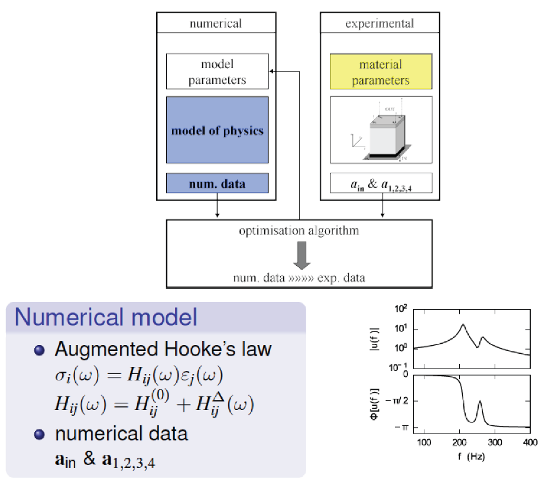Acoustics
Characterization of anisotropic properties of poro-elastic materials
The state of the art characterization of poro-elastic materials assumes isotropic material properties. In our laboratory we are researching into a novel experimental-numerical methodology for the identification of some of the key properties characterizing real poro-elastic materials: the anisotropic flow-resistivity, anisotropic dynamic stiffness and static stiffness properties. One of the key enablers for this work are the developed dedicated experimental facilities for accurate measurements of suitable field variables, in controlled and representable test configurations. The general idea as illustrated in the figure below, is based on an inverse estimation where the particular physical mechanism emphasized in the experimental setup is modeled and parametrisised in a numerical model. The set of parameters used in the model are then determined through a gradient based optimizer.


High resolution acoustic imaging
Acoustic cameras (microphone arrays) allow for the localization and quantification of sound sources in a wide frequency range. Far-field measurement techniques have a limited resolution inherent to the speed of sound. This limitation disappears when the array is placed in the near-field of the source and resolutions smaller than 1 mm at audible frequencies can be achieved if adequate sensors and processing are applied. This technique can be used to study the sound transmission through poro-elastic materials or the sound generation in rolling contacts.
